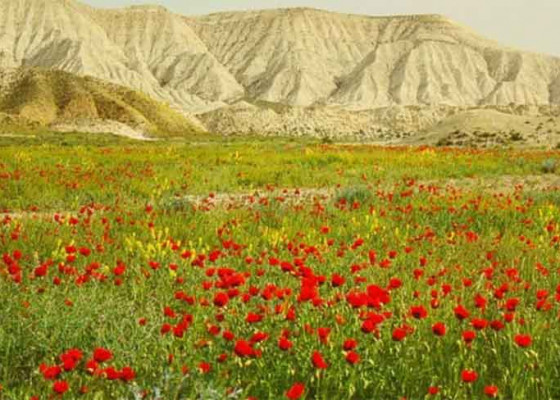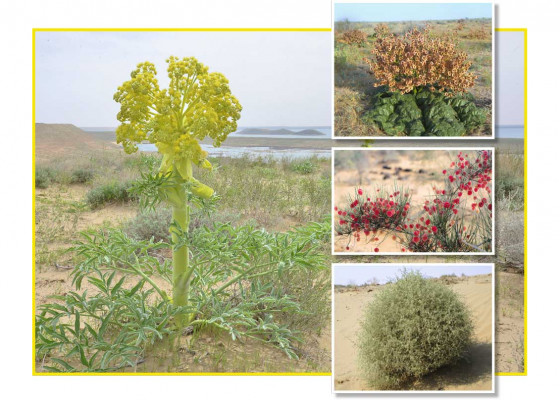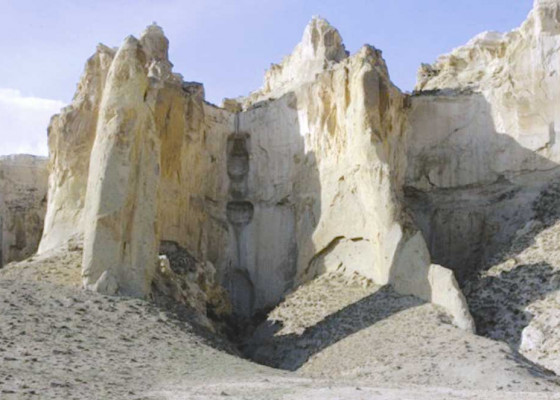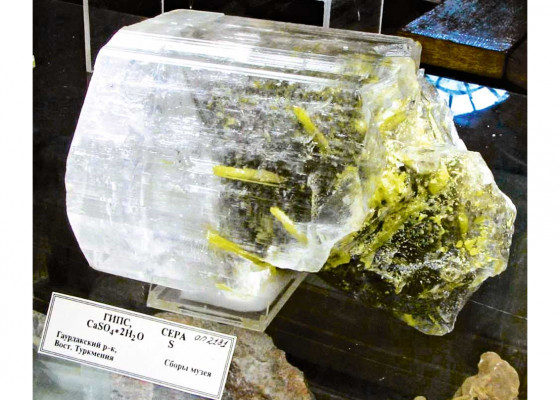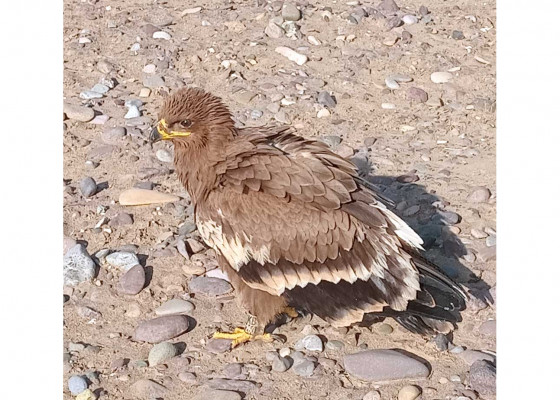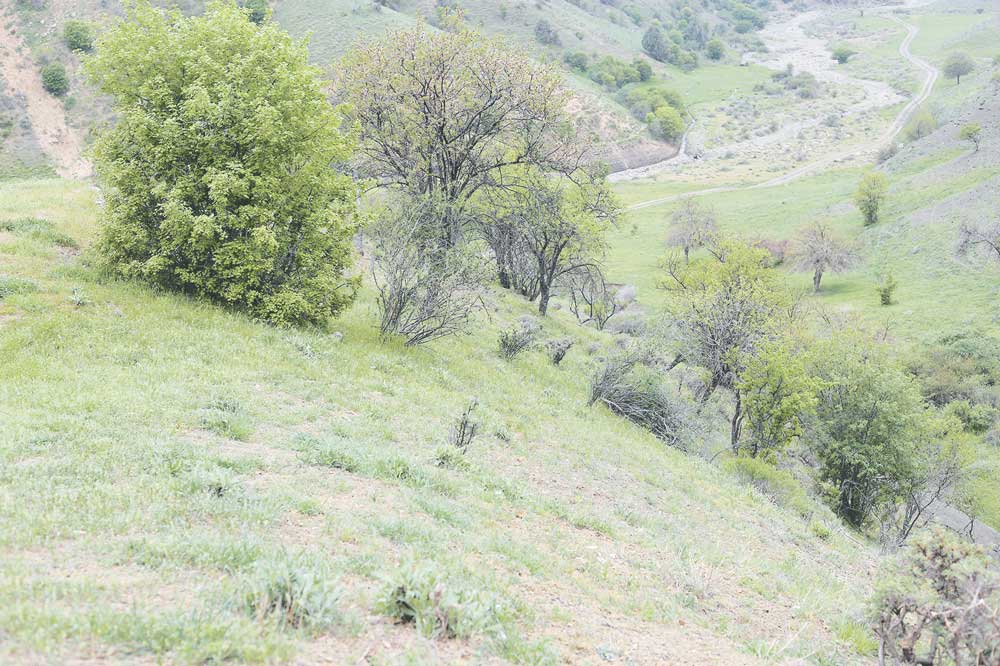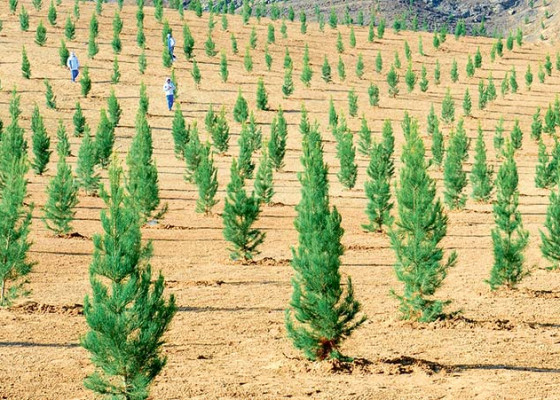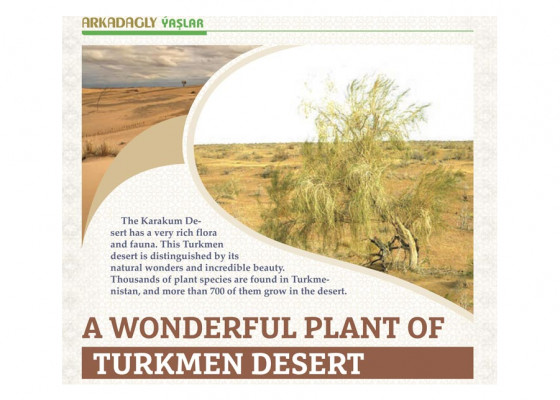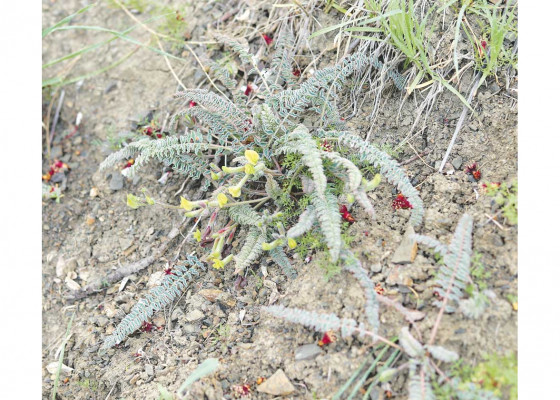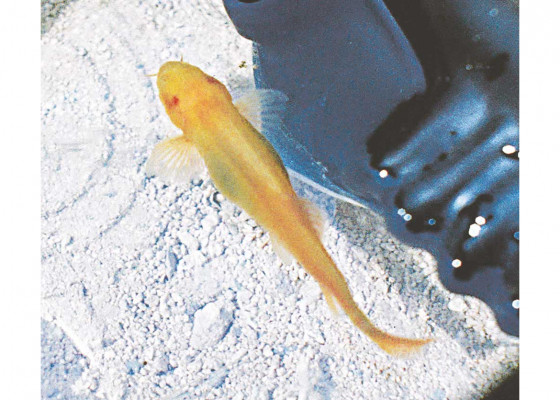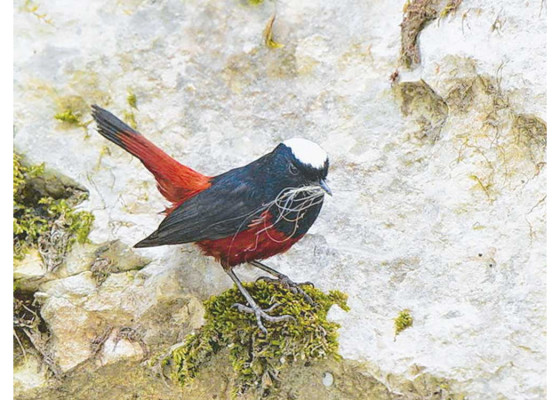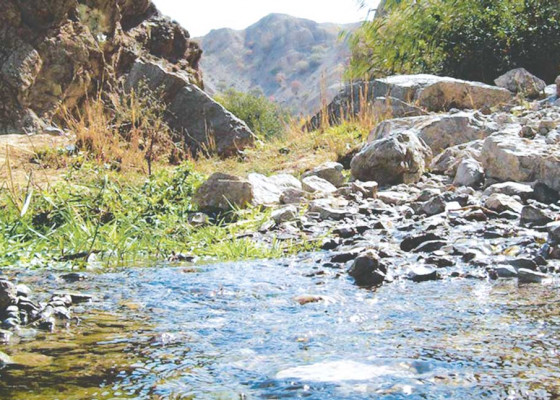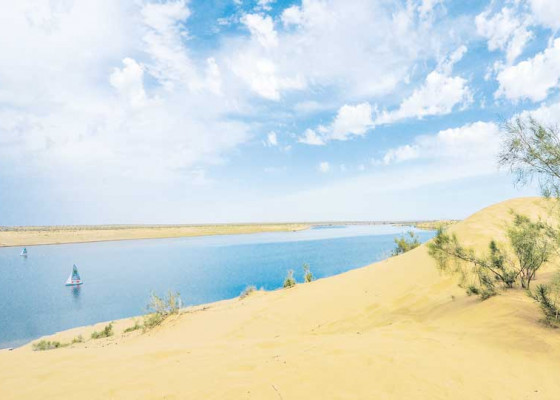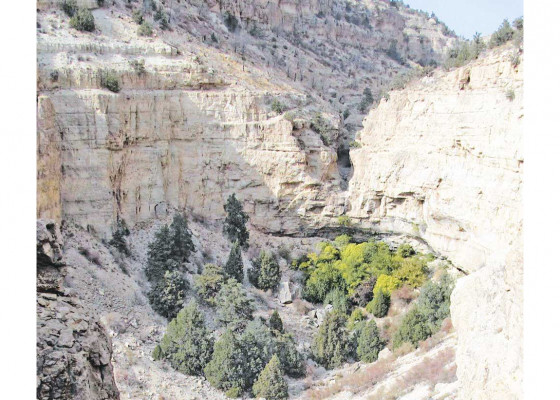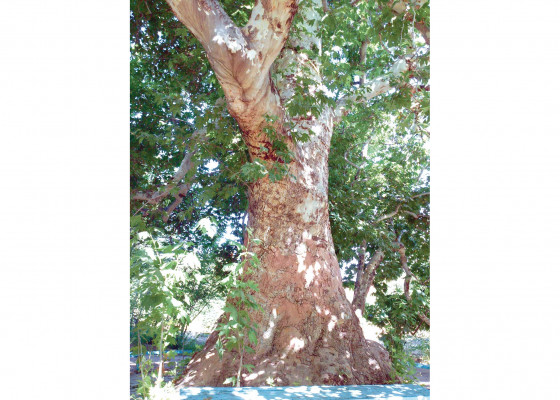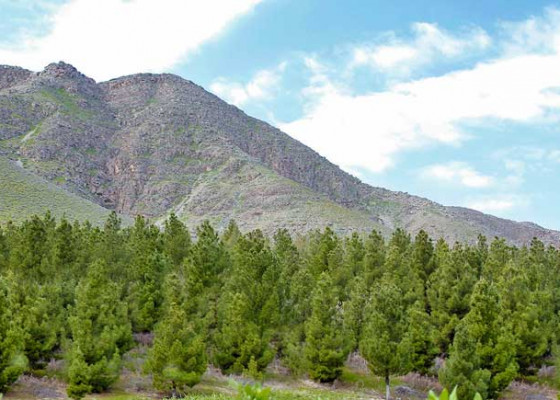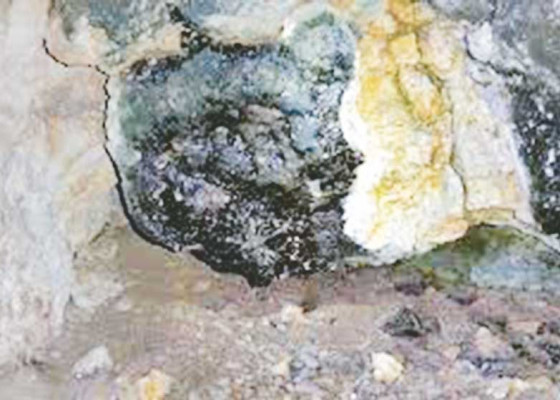Mountain “Glass”
The Great Balkhan mountain range, stretching for 80 km in length and 20 km in width, even with all its “compactness” in comparison with other mountain systems of the country, looks massive for the flat steppe surrounding it from all sides. The mountains are high enough (1,880 m above sea level), and when it is already warm at the foot by April, there may still be snow cover at the top. Their steep slopes with a large number of long and short gorges, intricate in their trajectory, with juniper thickets, up to the flat plateau of the upper tier, are difficult to pass and little explored. The mountains are made up of limestone and sandstone massifs, which are covered with grey soils, which explains the abundant vegetation cover. Limestone, depending on impurities, has a different density and, in interaction with precipitation, melt and mudflows, forms canyons of fanciful shape, steep chinks and intricate terrain. Karst sinkholes, niches and recesses in the calcareous mantle of rocky slopes, which, with a certain projection of chiaroscuro and the presence of a share of imagination, create a relief performance: scenery paintings of a pandemonium of various fairy-tale heroes and monsters. It is difficult to take your eyes off this phantasmagoria. The presence of limestone is a sign that the Balkhan Mountains are a product of marine deposits of the Palaeozoic era that underwent mount

